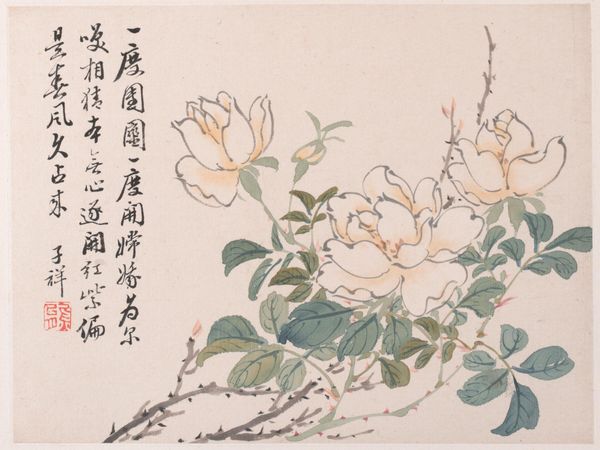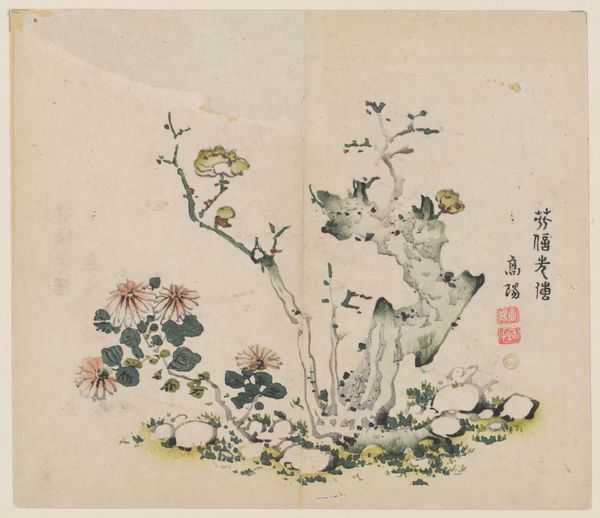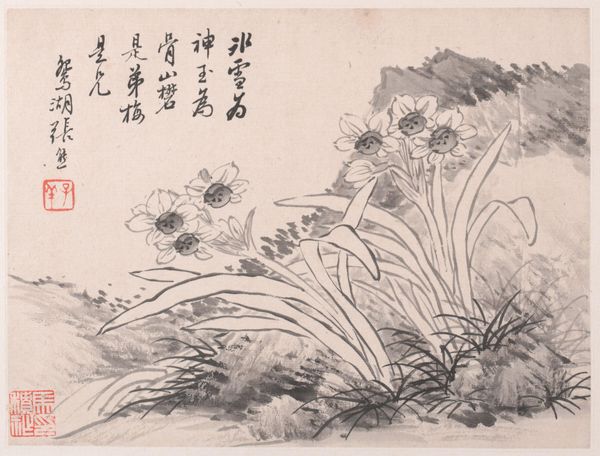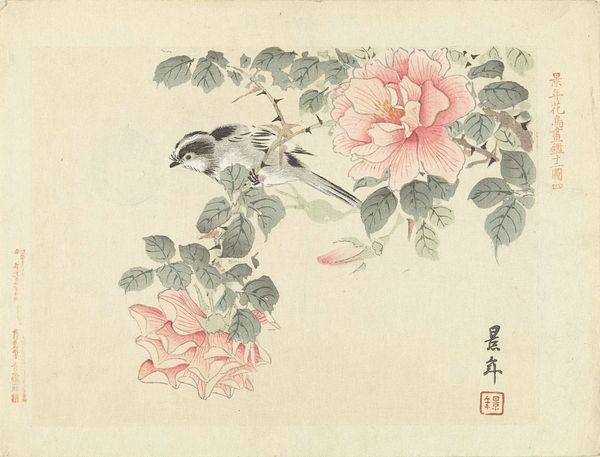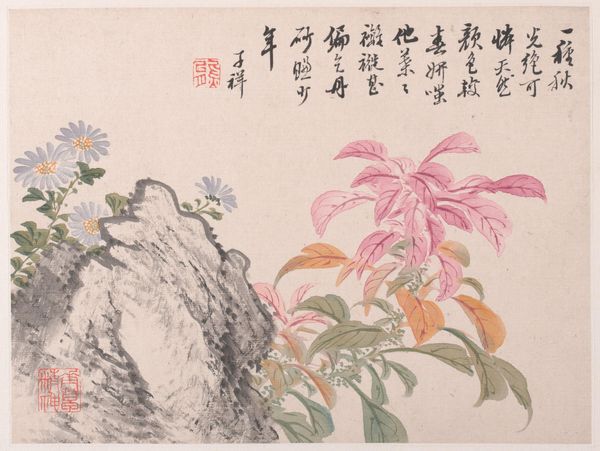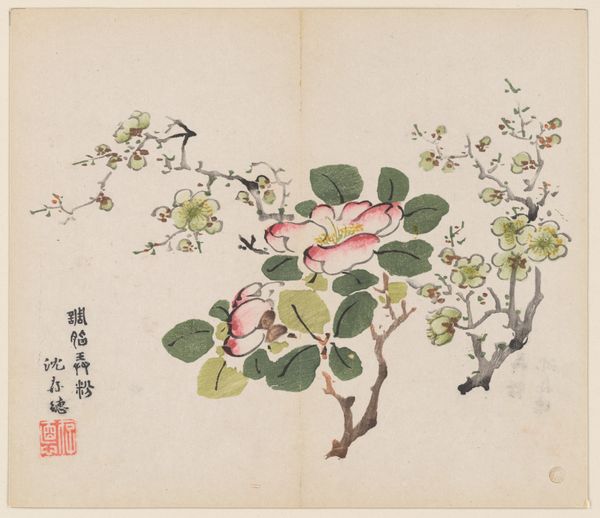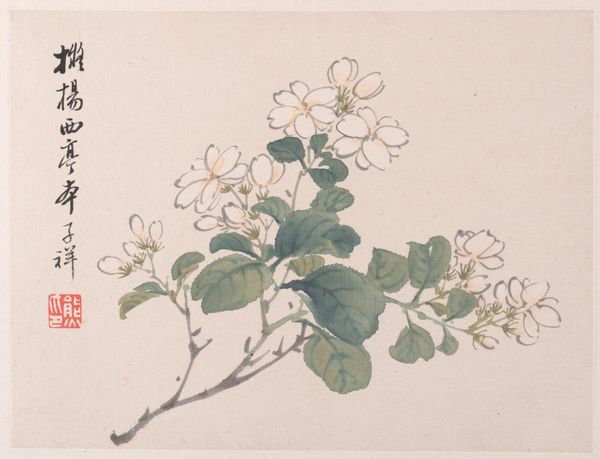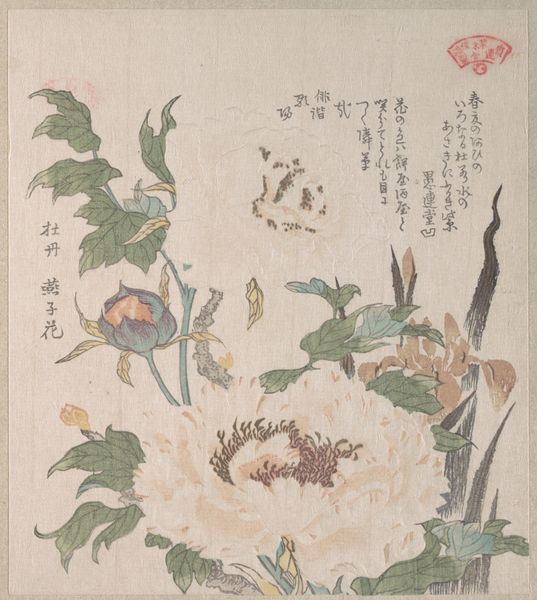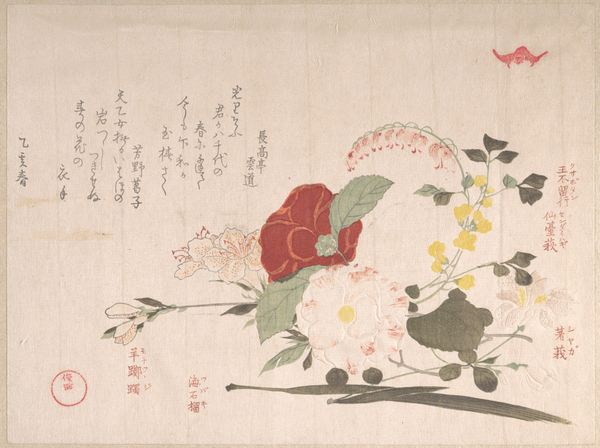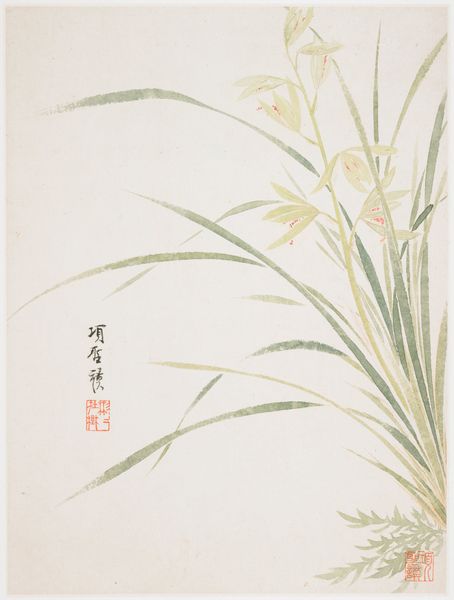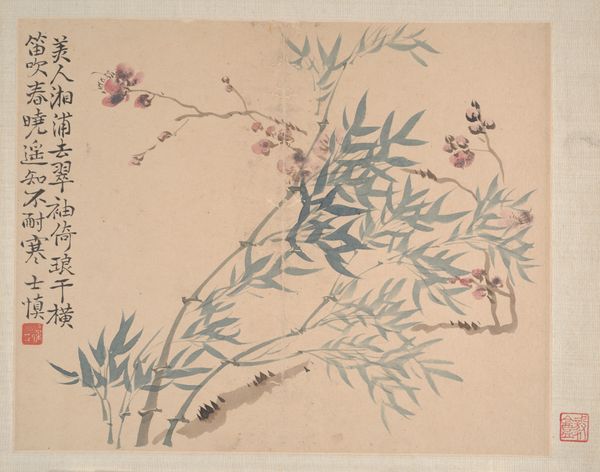
painting, watercolor
#
water colours
#
painting
#
asian-art
#
japan
#
watercolor
#
calligraphy
Dimensions: 10 1/16 x 12 7/16 in. (25.56 x 31.59 cm) (image)
Copyright: Public Domain
Editor: So, here we have "Lotus in Bloom," a watercolor painting attributed to Taki Katei from around the 19th century, currently residing here at the Minneapolis Institute of Art. I find the simplicity of the monochrome palette quite striking, almost meditative. What is your take on this artwork? Curator: Considering this work through a historical lens, it prompts us to think about the role of traditional art forms within Meiji-era Japan. During this period, artists navigated modernization and westernization while consciously preserving cultural heritage. What effect might the artist be hoping to produce in his audience? Editor: Do you mean in terms of reaffirming tradition? It does seem like a conscious choice to stick to traditional painting styles. Curator: Precisely. The deliberate embrace of traditional motifs like the lotus—associated with purity and enlightenment—can be viewed as a subtle resistance against the complete adoption of Western artistic values. But let’s also consider the exhibition context. Who was likely viewing this art, and how might the art's patrons influenced the artistic creation in that period? Editor: Ah, so you’re saying the very act of creating and displaying such a work, at that particular moment, becomes a statement in itself? Highlighting identity in the face of enormous sociopolitical and cultural shifts? Curator: Exactly. And the minimalist composition directs our focus – what political value can we read out of that choice of framing? Editor: I hadn't considered it that way. It shows how a simple painting of a flower can be so deeply connected to the wider social and political landscape. Curator: Indeed, seeing art as more than just aesthetics – understanding its role in shaping cultural identity and reflecting social change, that is our mission as historians.
Comments
minneapolisinstituteofart almost 2 years ago
⋮
Taki Katei specialized in Chinese literati style painting which he learned from Japanese masters Araki Kankai and Ooka Umpo but, also from Chinese scholar painters living in Nagasaki. The small scale of this painting, its seasonal and symbolic theme make it appropriate for use in the tea ceremony. The lotus has long been a Buddhist emblem, representing the perfection and "flowering" of the Buddha's teachings. The inscription may be translated: Untainted by muddy waters,The most fragrant of flowers.
Join the conversation
Join millions of artists and users on Artera today and experience the ultimate creative platform.

